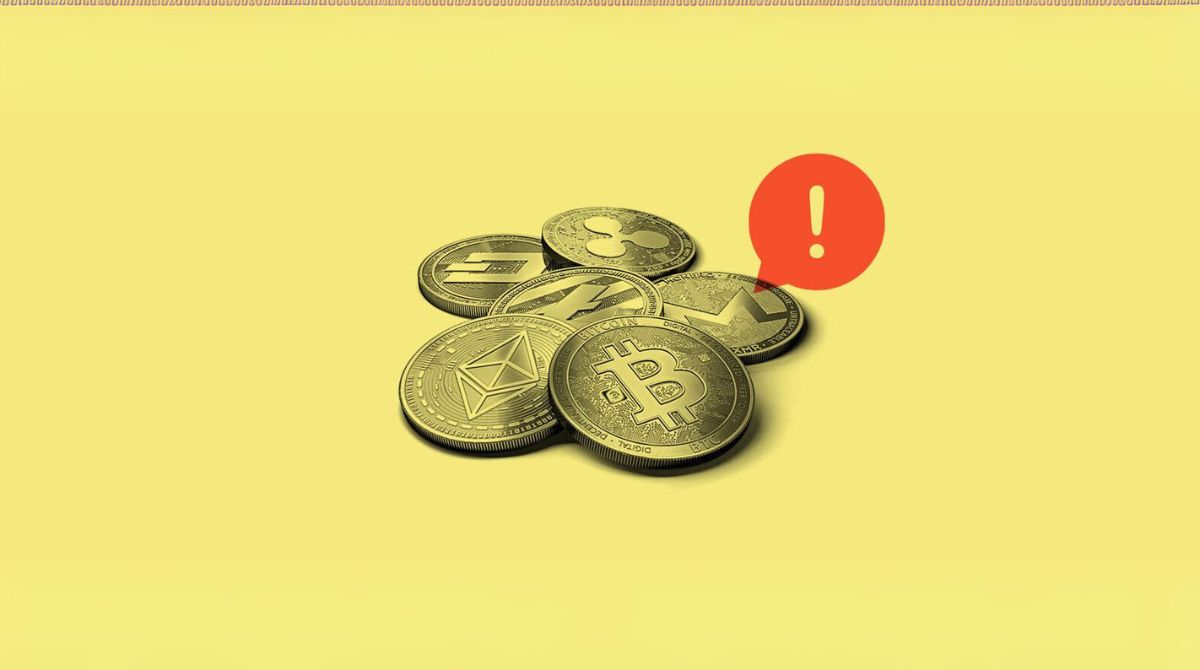Introduction
Welcome to the world of Bitcoin, a decentralized digital currency that has gained popularity in recent years. While Bitcoin offers numerous benefits, such as anonymity and ease of transactions, it is also susceptible to scams and fraudulent activities. If you have fallen victim to a Bitcoin scammer and lost your hard-earned money, you may be wondering if there is any way to get your funds back.
In this article, we will explore steps that you can take to increase your chances of recovering your money from a Bitcoin scammer. Please note that these steps may not guarantee a full refund, as every case is unique and dependent on various factors. However, by following these guidelines, you will be better equipped to navigate the process and potentially secure some reimbursement.
It’s important to remember that time is of the essence when dealing with scammers. The longer you wait to take action, the more difficult it may become to track down the scammer and retrieve your funds. So, let’s dive into the steps you can take to get your money back and hold the scammer accountable.
Step 1: Gather Information
The first step in the process of getting your money back from a Bitcoin scammer is to gather as much information as possible about the fraudulent transaction. This information will be crucial in building a case against the scammer and increasing your chances of success in recovering your funds.
Start by compiling any emails, messages, or communication you had with the scammer. Make sure to save screenshots or copies of these conversations, as they will serve as evidence of the fraudulent activity. Take note of any promises, guarantees, or misrepresentations made by the scammer, as this will strengthen your case.
In addition to communication records, gather any transaction details, such as wallet addresses, transaction IDs, and timestamps. If you made any payments to the scammer, locate the transaction records, including the amount sent and the date of the transaction. These details will help in identifying and tracking down the scammer.
If you have any information about the scammer’s identity, such as their name, location, or social media profiles, document it carefully. However, it’s important to note that scammers often use fake identities and aliases, so this information may not always be accurate. Nevertheless, any details you can gather might still be useful in the investigation process.
Remember, the more evidence and information you can collect, the stronger your case will be. This includes any additional supporting documents, such as receipts, invoices, or screenshots from websites or online platforms where the scammer operated.
Once you have gathered all the relevant information, make sure to keep it organized and secure. Store copies of your evidence on multiple devices or in cloud storage to prevent loss or damage. Having an organized and secure record of information will be invaluable as you proceed with the next steps in the process of getting your money back.
Step 2: Contact the Scammer
After gathering all the necessary information, the next step is to directly contact the Bitcoin scammer. While it may seem counterintuitive to engage with the person who defrauded you, reaching out to them can be a strategic move in the recovery process.
Before contacting the scammer, make sure to approach the conversation with caution and keep your emotions in check. Be professional, firm, and assertive in your communication. Avoid using threatening or derogatory language, as this could potentially harm your chances of a successful resolution.
When contacting the scammer, make it clear that you are aware of their fraudulent activities and that you are seeking a refund or resolution to the matter. Provide them with all the evidence and information you have gathered, backed by detailed explanations of the fraudulent actions that took place.
It’s important to note that scammers may not respond or may try to manipulate the situation. They may deny any wrongdoing, attempt to delay the process, or even threaten you. Stay resilient and persistent in your pursuit of justice.
If the scammer does agree to refund your money, proceed with caution. Request a written agreement or confirmation of the agreed-upon terms before providing any sensitive information or payment details. Be vigilant and skeptical of any requests for additional payments or personal information, as scammers may try to exploit the situation further.
In some cases, the scammer may refuse to cooperate or become unresponsive. If this happens, you’ll need to explore alternative methods to escalate the situation and increase the chances of recovering your funds.
Remember, contacting the scammer directly may not always guarantee a positive outcome, but it is an essential step in the process. By confronting the scammer and presenting your case, you demonstrate that you are determined to recover your money and hold them accountable for their actions.
Step 3: Document Everything
When dealing with a Bitcoin scammer and attempting to get your money back, thorough documentation of every step is crucial. Keeping a detailed record of all your actions and communications will not only help you stay organized but also serve as vital evidence if legal proceedings become necessary.
Start by creating a dedicated folder or digital document where you can store all relevant information related to the scam. This includes any emails, messages, or communication exchanges with the scammer. Take screenshots or save copies of these conversations, ensuring that timestamps and any identifying information are clearly visible.
In addition to communication records, document any financial transactions related to the scam. Keep track of payment receipts, transaction IDs, and any other relevant details associated with the transfer of funds. This information will provide a clear trail of the financial loss incurred.
Furthermore, record any actions you have taken to recover your money. This includes dates, times, and outcomes of any conversations or negotiations with the scammer or any third parties involved. Make note of any promises made, agreements reached, or obstacles encountered along the way.
It’s also important to document your efforts to report the scam to relevant authorities or organizations. Keep copies of any complaint forms, emails, or letters that you submit and note the response or follow-up actions taken by the respective entities.
When documenting everything, be as detailed and thorough as possible. Include any supporting evidence, such as screenshots, receipts, or relevant website links. The more comprehensive your records, the stronger your case will be when seeking legal assistance or pursuing other avenues for recourse.
Remember to keep your documentation secure and backed up in multiple locations. Store copies of your records on different devices or in cloud storage to prevent loss or damage. Organize the information in a logical manner, making it easily accessible for future reference.
By diligently documenting every step of your journey to recover your funds, you demonstrate your commitment to seeking justice and will be well-prepared to present a compelling case if needed.
Step 4: Report the Scammer
Reporting the Bitcoin scammer is a crucial step in the process of getting your money back and preventing others from falling victim to the same fraud. By reporting the scam, you not only help safeguard the community but also increase the chances of the scammer being held accountable for their actions.
Start by identifying the appropriate authorities or organizations to report the scam to. This can include local law enforcement agencies, cybercrime units, financial regulators, or consumer protection agencies. Research the jurisdiction that is relevant to your case and determine the most appropriate entity to contact.
When reporting the scam, provide all the evidence and information you have gathered, including communication records, transaction details, and supporting documents. Clearly explain the fraudulent activities that occurred and the financial loss you have incurred as a result.
Follow the reporting procedures outlined by the respective authorities or organizations. This may involve filing an official complaint, submitting online forms, or reaching out to a designated contact person. Provide all the requested information accurately and promptly to assist in the investigation process.
In addition to reporting the scam to official channels, consider warning others about the scammer’s activities. Share your experience on online forums, social media platforms, or dedicated scam alert websites. This helps raise awareness and potentially prevents others from falling into the same trap.
Remember to keep a record of your reporting efforts, including the dates and methods used. If there are any updates or responses from the authorities, note them down as well. This documentation will be useful for future reference and potential legal actions.
Each jurisdiction may have different procedures and timelines for addressing scams, so be patient and follow up with the authorities if necessary. It’s important to understand that reporting the scam does not guarantee an immediate resolution, but it is a crucial step in combating fraudulent activities and protecting yourself and others.
Step 5: Seek Legal Advice
If your attempts to recover your money from a Bitcoin scammer have been unsuccessful, or if you believe that legal intervention is necessary, it’s time to seek professional legal advice. Consulting with an attorney who specializes in financial fraud and cryptocurrency can provide valuable guidance and increase your chances of a successful resolution.
When seeking legal advice, look for professionals with expertise in the field of cryptocurrency and financial fraud. They will have a better understanding of the legal complexities involved and can provide tailored advice and strategies specific to your situation.
Prepare all the documentation and evidence you have gathered thus far to present to the attorney. This will enable them to assess the strength of your case and provide you with an informed opinion on the best course of action.
During your consultation or initial meeting, be open and honest with the attorney about your situation. Provide them with a comprehensive overview of the scam, the financial loss incurred, and the efforts you have made to recover your funds. Be sure to ask any questions you have and seek clarification on any legal processes or options available to you.
Based on their expertise and evaluation of your case, the attorney may advise you on the potential legal remedies available. This could include initiating legal action against the scammer, filing a civil lawsuit, or pursuing alternative dispute resolution methods depending on your particular circumstances and jurisdiction.
Keep in mind that pursuing legal action can be a lengthy and costly process, so it’s important to carefully consider the potential outcomes and weigh them against the resources needed. Discuss the costs, risks, and likelihood of success with your attorney before making a decision.
If you are unable to afford legal representation, consider reaching out to organizations or resources that provide legal aid or assistance specifically for victims of financial fraud or scams. They may be able to offer guidance or connect you with pro bono legal services.
Seeking legal advice is a critical step when dealing with a Bitcoin scammer. It helps you understand your options and rights, and it can significantly increase your chances of a successful resolution, whether it be through negotiation, mediation, or legal action.
Step 6: Retrieve Bitcoins
Recovering your lost Bitcoins from a scammer can be a challenging process, but it is not impossible. Depending on the circumstances, there are a few avenues you can explore to increase your chances of retrieving your funds.
1. Trace the Blockchain: Start by analyzing the blockchain to track the movement of your stolen Bitcoins. This may involve hiring a professional investigator or utilizing blockchain analysis tools to trace the flow of funds. By identifying the addresses involved in the scam, you can potentially determine if the stolen Bitcoins have been moved or if they are still within the scammer’s control.
2. Inform Exchanges: If the scammer has transferred your Bitcoins to a reputable cryptocurrency exchange, reach out to the exchange’s customer support or security team. Provide them with all the evidence and documentation you have gathered, including transaction details and communication records. They may be able to freeze or recover the funds if alerted early enough.
3. Cooperate with Law Enforcement: If your case involves significant financial loss or you have substantial evidence against the scammer, consider involving law enforcement agencies. Contact your local authorities or cybercrime units and provide them with all the information and evidence you have collected. They may conduct further investigations and assist in the recovery process.
4. Utilize Legal Assistance: If you have sought legal advice as mentioned in the previous step, your attorney can guide you on the best legal actions to take to recover your stolen Bitcoins. This may involve filing a lawsuit, obtaining a court order to freeze the scammer’s assets, or pursuing other legal avenues available in your jurisdiction.
5. Collaborate with Other Victims: If you are not the only victim of the Bitcoin scam, consider joining forces with others who have been defrauded. Forming a collective group can increase your collective bargaining power and potentially attract more attention from authorities or legal professionals. Collaborating with other victims can also provide emotional support and shared resources throughout the recovery process.
Keep in mind that the retrieval of stolen Bitcoins is a complex and multifaceted process, and success cannot be guaranteed. It is essential to remain patient, persistent, and consult with professionals who specialize in cryptocurrency fraud and recovery. Additionally, be wary of any individuals or services offering quick solutions or guarantees for retrieving your Bitcoins, as they may be fraudulent themselves.
Remember, the key to retrieving your stolen Bitcoins lies in proactive and strategic actions, supported by comprehensive documentation and collaboration with relevant authorities and professionals.
Step 7: Raise Awareness
One of the essential steps in the process of dealing with a Bitcoin scam is to raise awareness and warn others about the scammer’s activities. By sharing your experience and informing the community, you can help prevent others from becoming victims of the same fraudulent scheme.
There are several effective ways to raise awareness about the Bitcoin scam:
1. Share on Social Media: Utilize social media platforms to share your story and warn others about the scam. Describe the scam in detail, including the tactics used by the scammer and the financial loss incurred. Encourage others to share your posts to reach a wider audience.
2. Participate in Online Forums and Discussions: Join online forums or discussion boards related to cryptocurrency and financial scams. Share your experience and provide details about the scam to educate and inform the community. Answer questions and offer advice to those who may have encountered similar situations.
3. Write Blog Posts or Articles: If you have a blog or writing platform, consider writing a detailed blog post or article about your experience with the Bitcoin scam. Offer insights, lessons learned, and tips on how to avoid falling victim to scams in the future. Optimize the content with relevant keywords to increase its visibility in search engine results.
4. Report Scam Websites or Apps: If the scammer operated through a website or mobile app, report it to the appropriate authorities and online platforms. Alert cryptocurrency exchanges, online marketplaces, or app stores about the fraudulent activities and provide them with any evidence you have gathered.
5. Collaborate with Scam Alert Websites: Reach out to scam alert websites or platforms that specialize in exposing and warning about fraudulent schemes. Provide them with details of the Bitcoin scam and share your experience, allowing them to publish the information and help spread awareness.
By raising awareness, you empower others to recognize and avoid potential scams, ultimately making it more difficult for scammers to succeed in their fraudulent activities. Your efforts can contribute to a safer and more informed cryptocurrency community.
Step 8: Learn from the Experience
Going through the unfortunate experience of being scammed in the world of Bitcoin can be disheartening and frustrating. However, it’s essential to take this as a learning opportunity and make adjustments to prevent similar situations in the future. Here are some valuable lessons to learn:
1. Be Vigilant and Do Your Research: Before getting involved with any cryptocurrency transactions or investments, thoroughly research the platforms, exchanges, or individuals involved. Look for reviews, recommendations, and credible sources of information to ensure you are dealing with reputable and trustworthy parties.
2. Stay Informed About Scam Tactics: Scammers are constantly evolving their tactics to deceive unsuspecting individuals. Stay up-to-date with the latest scam techniques and familiarize yourself with the warning signs of fraudulent activity. This knowledge will help you identify and avoid potential scams in the future.
3. Practice Proper Security Measures: Implement robust security measures to protect your digital assets and personal information. Use strong and unique passwords, enable two-factor authentication, and keep your devices and software up to date. Regularly back up your private keys or wallet information to prevent potential loss of funds.
4. Trust Your Instincts: If something seems too good to be true or feels suspicious, trust your instincts. If an opportunity presents itself that promises significant returns with minimal risk, it’s likely a scam. Always exercise caution and skepticism when dealing with unknown or unverified entities.
5. Seek Professional Advice: When in doubt, consult professionals who specialize in cryptocurrency investments or transactions. Financial advisors, lawyers, or cybersecurity experts can provide valuable guidance and help you navigate the complexities of the cryptocurrency world.
6. Educate Others: Share your experience and lessons learned with friends, family, and the wider community. By spreading awareness of common scams and sharing preventive measures, you can protect others from falling victim to similar fraudulent schemes.
Remember, even though being scammed is a difficult experience, it can provide valuable insights and teach you to be more cautious in your future interactions with cryptocurrencies. By learning from the experience, you can arm yourself with knowledge and strategies to mitigate the risks associated with Bitcoin scams.
Conclusion
Dealing with a Bitcoin scam can be a challenging and distressing experience, but it’s important to take proactive steps to recover your funds and prevent others from falling victim to the same fraudulent activities. By following the steps outlined in this article, you can increase your chances of retrieving your money and holding the scammer accountable.
Remember to gather as much information as possible about the scam, including communication records, transaction details, and any supporting documents. Contact the scammer to confront them about their fraudulent activities, and document all interactions and efforts made to resolve the situation.
Report the scam to the appropriate authorities and raise awareness among others to prevent further victims. Seeking legal advice can provide valuable guidance and help you explore legal remedies if necessary. Remember to stay patient, persistent, and cautious throughout the process.
Finally, take the experience as an opportunity to learn and improve your future interactions with cryptocurrencies. Stay vigilant, educate yourself about scams, and implement proper security measures to protect your digital assets.
While there is no guarantee of a full recovery, by following these steps and remaining proactive, you can increase your chances of getting your money back and contribute to a safer and more secure cryptocurrency community.

























